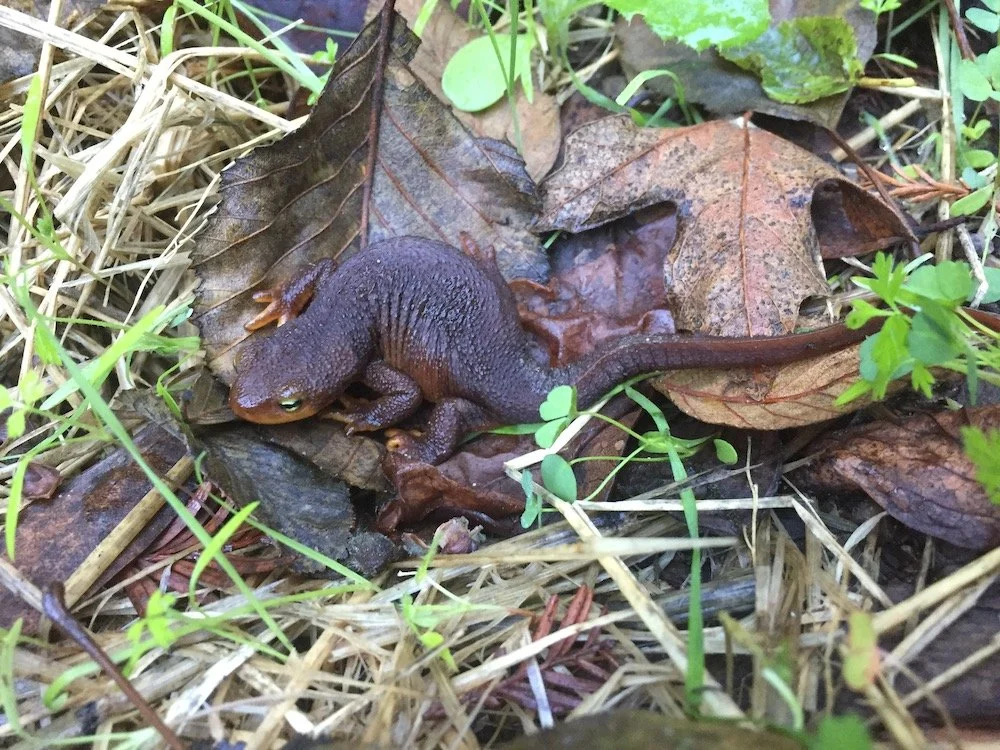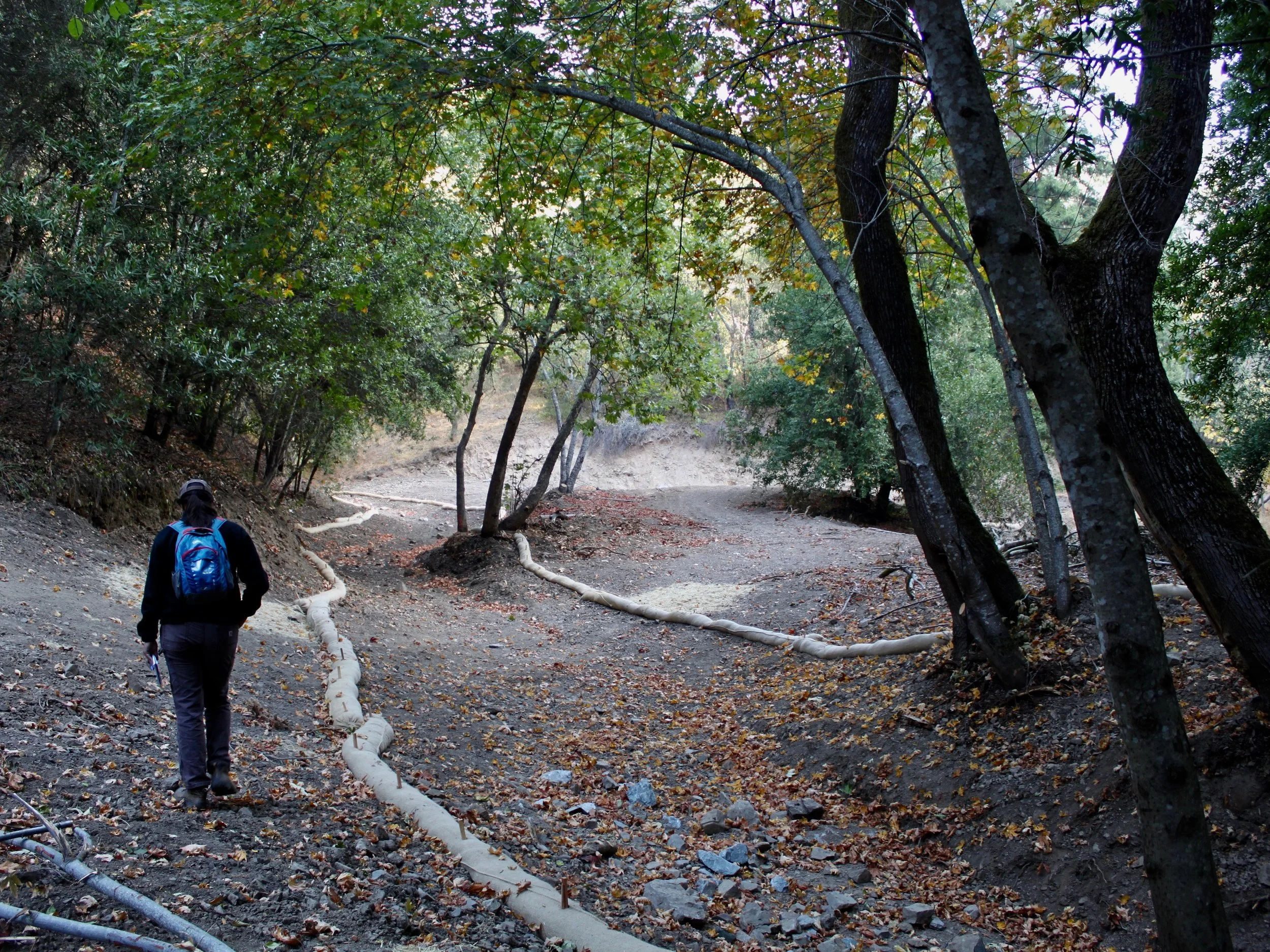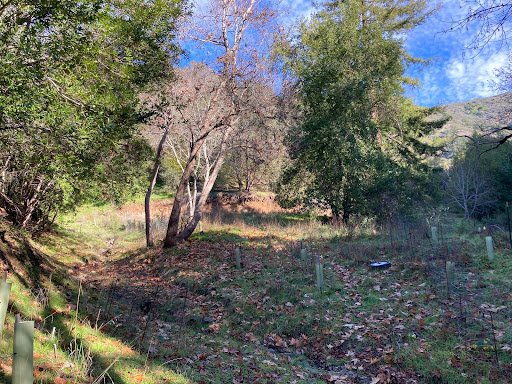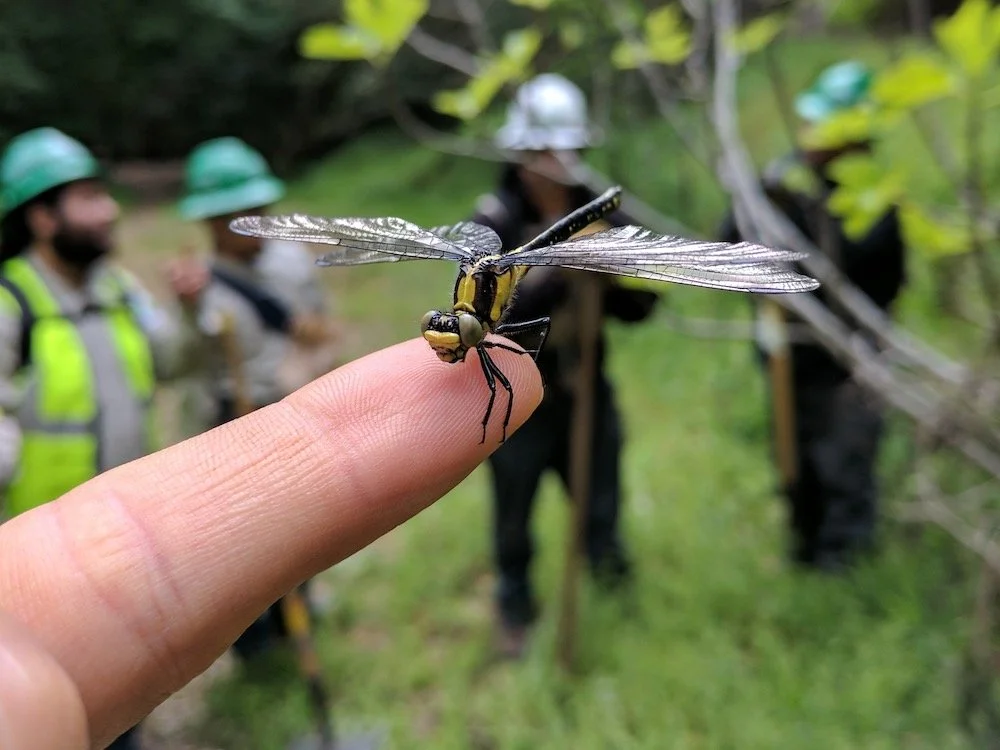A Success Story for Stream Restoration (and Salamanders)
Slender salamanders, downy woodpeckers, striped skunks, glowworms, king snakes, water pennies…These are just 6 of over 60 species of wildlife we’ve seen with our own eyes at Hendrys Creek since we began our habitat restoration work there in 2017.
But we are equally excited about the wildlife we haven’t seen there, which will also benefit from the stream’s restoration. This includes two rare salamanders who breed in the creek bed (Santa Cruz black and Pacific giant) and mammals like bobcats, gray foxes, and mountain lions that move along the creek corridor and drink from its waters.
A California newt at Hendrys Creek
Never heard of Hendrys? Neither had we. Hendrys is a remote tributary to a perennial stream that flows through a steep wooded canyon within the headwaters of Los Gatos Creek. Once graded to create parking pads for trailers and unofficial structures, the land became part of Midpen’s Sierra Azul Open Space Preserve in 2015, thanks to the conservation efforts of Peninsula Open Space Trust and Valley Water.
Midpen soon began an ambitious endeavor to restore the creek to its natural state. They removed roadways, culverts, and other human-made stream impediments, and reconnected the stream channel to its tributaries.
Once the earth work work was done, it was time to bring in the green fingers. Grassroots Ecology staff—aided by young adult members of the San Jose Conservation Corps—took on the task of sowing native biodiversity back into the creek corridor.
Part of our team at Hendrys Creek
Over the next four years, we spread native seed over ripped roads and building pads, propagated and installed 1,600+ native trees, shrubs, and groundcovers, and planted hundreds of acorns and buckeye nuts.
In conjunction with planting and seeding, we knocked back invasive plant populations across more than four acres, targeting two formidable invaders—French broom and big leaf periwinkle—and stopping new invaders like stinkwort and yellow starthistle from getting a foothold.
One planting area at Hendrys Creek in October 2018
The same area in December 2021, covered with native plants and trees in green tubes
Four years later, we have laid the groundwork for a healthy, resilient ecosystem. Native grasses and plants have taken root and spread, outcompeting weeds in several locations. Denuded areas of the creek where roadways were removed now bloom with native lupine and wildflowers in the spring. Many of the trees we planted grew so rapidly that they are now taller than the tree tubes they were installed with.
Pacific spiketail with the San Jose Conservation Corps in the background
With our role in the Hendrys Creek restoration project now complete, we will miss having regular access to this hidden gem of wilderness. But it gladdens us to know that these joint efforts have improved habitat for creatures great and small—from the humble water penny to the giant salamander—even if we don’t get to see them with our own eyes.
By Claire Grist, Project Lead







